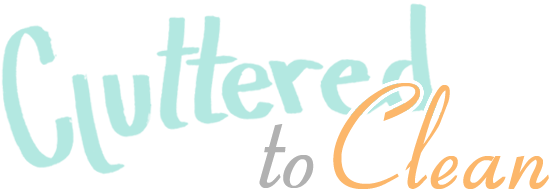If I had 30 seconds on a radio show to tell everybody in the listening audience how to declutter, this would be what I would share.
Ready?
The process is called “iterative decluttering”. To begin with, let’s get into our standard decluttering mode:
- Identify an area that you want to focus on
- Get a box for donations
- Make sure you have a bag or trash can for garbage
The Method
Now you’ve got your supplies. Here’s the procedure:
- Pull everything out of the area you’re working on. Do this one box / bag / item at a time. Note carefully this doesn’t mean to be *aware* of each item in the area – the fact that you can see all the shoes in the closet doesn’t matter. You have to physically remove each and every shoe from the back of the closet and hold it in your hand.
- Inspect each item carefully. This is why you must remove everything. Those shoes that look pretty when they’re sitting on the floor of the closet may have scratches, scuffs, dings, an interior pad that’s not in great shape, etc. You want to have close enough contact with these items that you can notice those things.
- If reasonable/applicable, test the function of each item. In the case of the pair of shoes, give them a quick try-on. Do they fit? Are they comfortable?
- Now make a decision to declutter / donate, trash, or keep. You’re not working with a quota here, so any decision you make is perfectly fine. Do not over-think this. If your first impulse is to keep it, put it back and move to the next item. It’s perfectly okay to decide that everything in your closet is a “keep”, even if your closet is currently over-stuffed. Obviously if you’re donating something, toss it in the donation bin. Trash gets trashed. If it’s an item that you want to keep, but it belongs elsewhere, set it aside somewhere and re-home it when you’re done.
- Schedule a date in the next 3/6/12 months to do this again. The key to this method is systematically revisiting each area repeatedly over time. You will almost certainly find that every time, you release just a bit more of your clutter.
This process is very simple, but every single step of it is very specific – and the process doesn’t work if you shortcut things.
Some Objections
I’ve heard a number of objections to this over the years.
“I don’t have to handle every individual item – I can just look and see what’s there.” No, really, you have to handle everything. There’s something about physically touching every single item that you own that helps your brain come to grips with the reality of your stuff.
“But this takes a lot of time.” It definitely takes time to go through all of your stuff. No argument from me. I’m confused though as to what the useful, viable alternative is. You’re going to have to go through everything anyway sooner or later though – there’s no getting around that.
“No, I mean doing it over and over again wastes time.” It depends on how you define “wasted time”. Forcing yourself to declutter things, or giving yourself a declutter quota, or whatever, does nothing to address the underlying internal challenges that caused the clutter to accumulate in the first place – which means you’re very likely to just re-accumulate a bunch of clutter to replace the stuff you just got rid of. Physically handling your items, over and over again over time, trains your brain to realize that hanging on to all this junk has a cost – and eventually your brain will adjust and allow you to let go of the things that aren’t truly important to you.
“I did this, and I didn’t get rid of much of anything. It doesn’t work.” Usually the people who say this didn’t do the “schedule a date in the next 3/6/12 months to do it again” step. The repetition is an absolute key to making this work.
My Success Story
I started this method about a decade ago with a bookcase that was 12 feet long and 6 shelves high. That’s 72 linear feet of books. Now, I’m down to about 18 linear inches. How did I get there? By applying the exact method I gave above, twice a year, over the course of 3-4 years.
Never at any point did I consciously sit down and decide “I’m going to come up with a plan for what books I’m going to keep and what books I’m going to pitch”. In fact, my brain would have rebelled had I even tried to do that. I loved books. I still love books, actually – I’m just not attached to the idea of owning the physical copy of them anymore.
I just kept going through everything as noted above, and my brain gradually came to grips with all the “just in case” stuff I was hanging on to, started realizing that “just in case” wasn’t ever actually occurring, and gradually became comfortable with me releasing more and more stuff.
My first purge I might have gotten rid of half a dozen books. My next purge was more. And so on, until I could fit all my books on a small book case 3-4 years later. And now of course I’m down to a very small collection of stuff that I really want to pick up off the shelf and use for reference.
Trust me – this method works, if you actually do it.
What about you? Have you ever tried this method? What was your experience?

